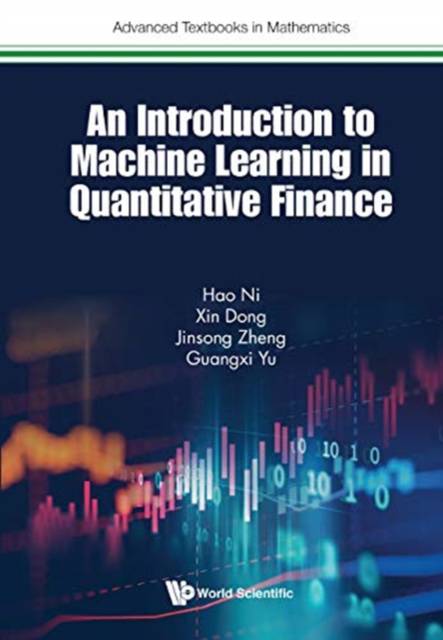
- Afhalen na 1 uur in een winkel met voorraad
- Gratis thuislevering in België vanaf € 30
- Ruim aanbod met 7 miljoen producten
- Afhalen na 1 uur in een winkel met voorraad
- Gratis thuislevering in België vanaf € 30
- Ruim aanbod met 7 miljoen producten
Zoeken
An Introduction to Machine Learning in Quantitative Finance
Hao Ni, Xin Dong, Jinsong Zheng, Guangxi Yu
€ 73,45
+ 146 punten
Uitvoering
Omschrijving
In today's world, we are increasingly exposed to the words 'machine learning' (ML), a term which sounds like a panacea designed to cure all problems ranging from image recognition to machine language translation. Over the past few years, ML has gradually permeated the financial sector, reshaping the landscape of quantitative finance as we know it.An Introduction to Machine Learning in Quantitative Finance aims to demystify ML by uncovering its underlying mathematics and showing how to apply ML methods to real-world financial data. In this book the authorsFeatured with the balance of mathematical theorems and practical code examples of ML, this book will help you acquire an in-depth understanding of ML algorithms as well as hands-on experience. After reading An Introduction to Machine Learning in Quantitative Finance, ML tools will not be a black box to you anymore, and you will feel confident in successfully applying what you have learnt to empirical financial data!
Specificaties
Betrokkenen
- Auteur(s):
- Uitgeverij:
Inhoud
- Aantal bladzijden:
- 264
- Taal:
- Engels
- Reeks:
Eigenschappen
- Productcode (EAN):
- 9781786349644
- Verschijningsdatum:
- 13/04/2021
- Uitvoering:
- Paperback
- Formaat:
- Trade paperback (VS)
- Afmetingen:
- 152 mm x 229 mm
- Gewicht:
- 358 g

Alleen bij Standaard Boekhandel
+ 146 punten op je klantenkaart van Standaard Boekhandel
Beoordelingen
We publiceren alleen reviews die voldoen aan de voorwaarden voor reviews. Bekijk onze voorwaarden voor reviews.











